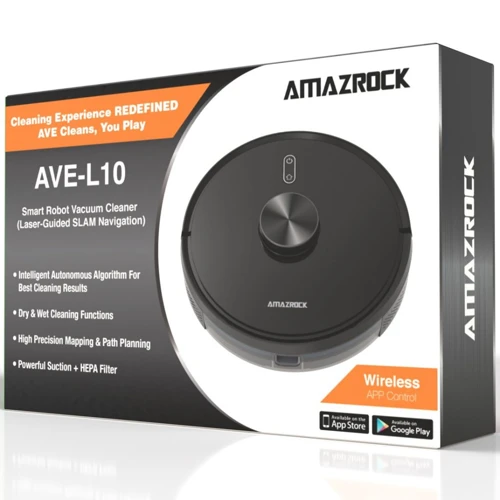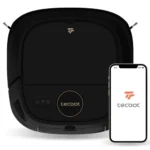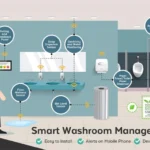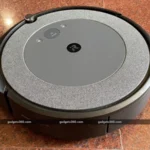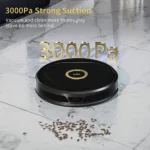As technology advances, so do our household appliances. One device that has seen tremendous growth over the years is the smart vacuum cleaner. These machines have the ability to clean your floors effortlessly and efficiently by using advanced technologies such as SLAM. But what exactly is SLAM? How does it work? And how does it help smart vacuum cleaners navigate and map your home? In this article, we will dive into the fascinating world of SLAM technology and its benefits, limitations, and current applications in the world of smart vacuum cleaners. So, buckle up and let’s explore this intriguing topic together.
SLAM Technology Explained
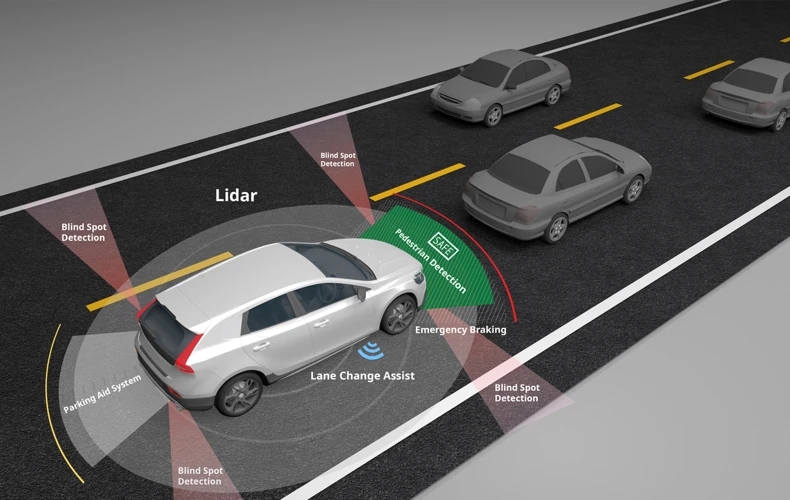
Understanding SLAM technology is essential to comprehend how smart vacuum cleaners navigate and map your home. SLAM stands for “Simultaneous Localization and Mapping.” It refers to the ability of a device, such as a robot vacuum cleaner, to create a map of an unknown environment and determine its location simultaneously. This real-time mapping allows the robot vacuum to accurately navigate around obstacles and objects in your home. In this section, we will explain what SLAM technology is and how it works, the role of sensors in SLAM technology, and the benefits of SLAM technology for smart vacuum cleaners.
What is SLAM Technology?
Simultaneous Localization and Mapping (SLAM) technology is a highly advanced method for simultaneously creating a map of an unknown environment and accurately determining the location of a smart vacuum cleaner (source). SLAM technology is based on a combination of sensor data, robotics hardware, and software algorithms that work together to provide efficient navigation and accurate mapping capabilities to smart vacuum cleaners.
SLAM technology is highly complex and requires a series of interconnected processes to take place in real-time. When a smart vacuum cleaner is set into motion, it gathers data from its sensors to construct a map of the environment in which it is operating (source). At the same time, it uses this map to navigate through the environment without getting lost.
To build a map of the environment, SLAM technology uses a combination of sensors such as infrared, laser, and vision (source). These sensors gather data about the surrounding environment, such as the shape of objects, distances to walls, and angles to corners. The data collected by sensors is then processed by software algorithms to create a detailed map of the environment.
In addition to mapping, SLAM technology also helps smart vacuum cleaners to determine their position in real-time (source). By continuously collecting data from the sensors and comparing the newly collected data to the data stored within the map, the smart vacuum cleaner can determine its current position within the environment. This allows the robot to adjust its movements accordingly and navigate through the environment more efficiently.
SLAM technology is a highly advanced and complex process that enables smart vacuum cleaners to navigate and map their surroundings (source). Using a range of sensors and software algorithms, SLAM technology has revolutionized the way smart vacuum cleaners operate, resulting in more efficient navigation, more accurate mapping, and improved cleaning performance.
How Does SLAM Technology Work?
SLAM technology stands for simultaneous localization and mapping which allows smart vacuum cleaners to create a map of the home while keeping track of their position on this map. SLAM technology is a complex algorithm that allows a robot vacuum to autonomously navigate in an unknown environment by creating a virtual map of the area and determining its location within that environment.
The technology behind SLAM works by using a combination of different sensors that enable the robot vacuum to gather information about its surroundings. There are various types of sensors used in robot vacuum cleaners such as light detection and ranging (LIDAR), optical sensors, and time-of-flight sensors.
The robot vacuum cleaner uses the data from these sensors to create a map of the environment which it is exploring by detecting and identifying objects in its path. The robot vacuum cleaner is able to identify obstacles such as walls, furniture, and other objects and create an accurate map of the environment.
The following table shows the basic steps that a robot vacuum cleaner takes when using SLAM technology:
| Step 1 | Exploration of the environment |
| Step 2 | Mapping the environment using sensors |
| Step 3 | Localization using mapping data and sensor feedback |
| Step 4 | Avoidance of obstacles by using the sensor data and mapping information |
| Step 5 | Optimization of cleaning path by using mapping data |
Using SLAM technology, robot vacuum cleaners can intelligently avoid obstacles and create an optimal cleaning path that ensures every corner of the room is cleaned. However, there are certain factors that might affect the accuracy of SLAM technology which we will discuss in the subsequent sections of this article.
SLAM technology is an essential component of modern robot vacuum cleaners since it enables them to navigate and clean a home more efficiently while avoiding obstacles and creating accurate maps of the environment. If you want to learn more about troubleshooting robot vacuum cleaners that use SLAM technology, refer to our guide on smart vacuum SLAM troubleshooting tips.
The Role of Sensors in SLAM Technology
The Role of Sensors in SLAM Technology:
SLAM technology relies heavily on various sensors to help smart vacuum cleaners navigate and map your home. Some of the most important sensors used in SLAM technology include:
- Lidar Sensors: These sensors use laser light to measure the distance between the robot and objects in its environment. This information is then used to create a detailed map of the robot’s surroundings. Lidar sensors are commonly used in high-end robotic vacuum cleaners and offer superior mapping accuracy.
- Optical Sensors: These sensors use cameras to capture images of the environment in front of the robot. These images are then processed to create a map of the robot’s surroundings. Optical sensors are typically used in cheaper robotic vacuum cleaners and offer lower mapping accuracy compared to Lidar sensors.
- Inertial Measurement Units (IMUs): These sensors measure the robot’s acceleration and rotation in three-dimensional space. IMUs are used to track the robot’s movement and direction, allowing it to navigate accurately through complex environments.
- Ultrasonic Sensors: These sensors emit high-frequency sound waves that bounce off objects in the robot’s environment. By measuring the time it takes for the sound waves to return, the robot can determine the distance to nearby objects. Ultrasonic sensors are typically used in smaller, more affordable robotic vacuum cleaners.
- Bumper Sensors: These sensors are located on the outside of the robot and detect physical contact with objects in the environment. When the robot comes into contact with an object, the bumper sensor sends a signal to the robot’s software to adjust its movement.
These sensors work together to help the robot build a detailed map of its environment and navigate through it efficiently. As the robot moves through the environment, it continually updates its map and adjusts its movement based on the data collected by these sensors. The success of SLAM technology depends on the accuracy and reliability of these sensors in different lighting conditions and environments.
How SLAM Technology Benefits Smart Vacuum Cleaners
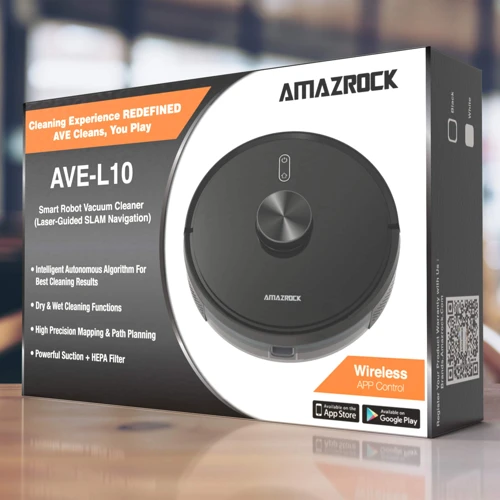
As we move towards more automated homes, smart vacuum cleaners have become immensely popular. However, their efficiency depends on their ability to navigate and map the home accurately. This is where SLAM technology comes into play. By incorporating SLAM technology, these robotic devices can efficiently travel around and meticulously map out homes for an impeccable cleaning experience. In this way, SLAM technology benefits smart vacuum cleaners by providing efficient navigation, accurate mapping, and improved cleaning performance. Let’s delve deeper into the advantages of SLAM technology for smart vacuum cleaners.
Efficient Navigation
Smart vacuum cleaners equipped with SLAM technology can navigate your home in a more efficient way compared to traditional vacuum cleaners. Here are some ways that efficient navigation can benefit homeowners:
- Saves Time and Energy: Smart vacuum cleaners with SLAM technology can create a map of your home as they clean, making it easier and quicker to navigate and clean in subsequent cleaning sessions. This saves time and energy for the homeowner since the vacuum will not have to do a complete scan of the home each time it cleans.
- Seamless Cleaning: Efficient navigation helps the vacuum cleaner to seamlessly transition between rooms and even floors. The vacuum can create a map of each essential feature in the home for better orientation while cleaning.
- Improved Speed and Performance: With the map of your home, the vacuum cleaner can avoid covered areas where it has already cleaned, making it faster in cleaning and allowing it to focus on the dirtiest areas for a better clean.
- Customized Cleaning: With efficient navigation, smart vacuum cleaners can learn the most efficient and effective cleaning path for your specific home setup and adjust accordingly for optimized cleaning results.
Efficient navigation enabled by SLAM technology will make vacuuming easier, quicker, and more customized for homeowners.
Accurate Mapping
One of the major benefits of SLAM technology for smart vacuum cleaners is accurate mapping. With SLAM, the robot can create a detailed and precise map of the environment it is cleaning, allowing it to navigate more efficiently and clean more thoroughly. Here are some factors that contribute to accurate mapping:
- Sensor data: The robot’s sensors, such as lidar or cameras, provide detailed information about the environment, including distances, angles, and features. The SLAM algorithm uses this data to create a map with high accuracy.
- Multi-level mapping: Some smart vacuum cleaners use multi-level mapping, which means they create separate maps for different floors or rooms. This allows for greater accuracy and precision when navigating through complex environments.
- Real-time updates: As the robot moves through the environment, the SLAM algorithm updates the map in real-time, so the robot always has the most up-to-date information about the environment. This ensures accurate navigation and cleaning performance.
Accurate mapping is especially important for larger homes or complex environments with many obstacles and clutter. With SLAM technology, smart vacuum cleaners can create detailed maps that allow them to navigate around furniture, walls, and other obstacles with ease. This means that they can clean more thoroughly and efficiently, without getting stuck or missing areas.
However, it’s important to note that accurate mapping is not always guaranteed. Factors such as lighting conditions, hardware/software compatibility, and dynamic environments can all affect the accuracy of SLAM technology. Nonetheless, when properly implemented, SLAM can be a powerful tool for improving the cleaning performance of smart vacuum cleaners.
Improved Cleaning Performance
Smart vacuum cleaners equipped with SLAM technology not only navigate and map your home, but also improve their cleaning performance. This is achieved through various capabilities and features enabled by SLAM technology, as highlighted in the table below.
| Capability/Feature | Description |
|---|---|
| Targeted cleaning | Smart vacuum cleaners can detect and remember the location of the dirtiest areas in your home, and prioritize cleaning those areas first. |
| Customizable cleaning patterns | SLAM technology allows for the creation of custom cleaning patterns based on your specific preferences and needs. You can program your vacuum cleaner to focus on certain areas or avoid certain obstacles. |
| Efficient path planning | With SLAM technology, smart vacuum cleaners can plan the most efficient cleaning path for your home, ensuring maximum coverage and minimal overlap or missed spots. |
| Automatic recharging and resuming | When the battery of your smart vacuum cleaner runs low, it can automatically dock and recharge itself before resuming cleaning where it left off. |
| Real-time tracking and monitoring | Many smart vacuum cleaners with SLAM technology come with companion apps that allow you to track and monitor the cleaning progress in real-time. You can also schedule and customize cleaning patterns through the app. |
These capabilities and features not only make cleaning faster and more efficient, but also ensure thorough cleaning of your home. Smart vacuum cleaners with SLAM technology can identify and clean even hard-to-reach areas, and adjust their cleaning patterns based on changes in the environment, such as furniture movement, lighting, and room layouts.
The improved cleaning performance of smart vacuum cleaners equipped with SLAM technology is a game-changer for modern homes. With customizable patterns, efficient path planning, and real-time tracking and monitoring, smart vacuum cleaners take the hassle out of cleaning, leaving you with more time to enjoy your clean and tidy home.
Factors That Affect SLAM Technology
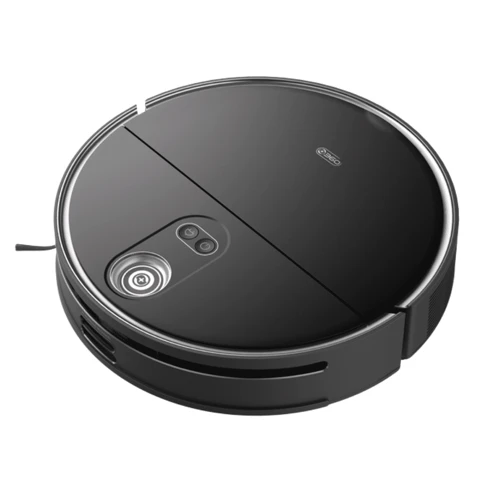
As impressive as SLAM technology may be, it is not without its limitations. Various factors can affect the efficacy of SLAM technology, making it necessary for manufacturers to take these into account when designing their smart vacuum cleaners. From lighting conditions to obstacles and clutter, these variables can make or break the success of a smart vacuum’s navigation and mapping capabilities. Additionally, the hardware and software used in robotics can also affect the performance of SLAM technology. Let’s take a deep dive into each of these variables and how they play a role in SLAM technology.
Lighting Conditions
One of the key factors that can affect SLAM technology in smart vacuum cleaners is lighting conditions. In order to map and navigate a given space, the vacuum cleaner relies on its sensors to detect landmarks and other visual cues. However, if the lighting is too dim or too bright, these sensors may not be able to properly detect these cues, leading to inaccurate mapping and navigation.
Here are some specific ways in which lighting conditions can impact SLAM technology:
- Low light: If the lighting in a room is too dim, it can be difficult for the vacuum cleaner’s sensors to detect landmarks and other visual cues. This can lead to errors in mapping and get the vacuum cleaner stuck or unable to identify its location.
- Harsh shadows: Strong shadows can also pose a problem for SLAM technology. If there are deep shadows created by furniture or other obstacles, the vacuum cleaner’s sensors may have difficulty detecting landmarks or may misidentify them.
- High contrast: Similarly, high-contrast lighting situations where there is a lot of difference in brightness between surfaces can also create difficulties for SLAM technology. In these cases, the vacuum cleaner may have trouble correctly identifying landmarks and navigating around obstacles.
- Glare and reflections: Glare or reflections from shiny surfaces can also impact SLAM technology in smart vacuum cleaners. If the sensors perceive glare as a landmark, for example, the vacuum cleaner may attempt to navigate around it or clean it, when in reality it is just a reflection.
Lighting conditions can have a significant impact on the accuracy and performance of SLAM technology in smart vacuum cleaners. While some advanced models may be able to account for variations in lighting using machine learning algorithms, it’s important to be aware of these factors when using a smart vacuum cleaner in your home.
Obstacles and Clutter
Obstacles and Clutter
One of the biggest challenges that smart vacuum cleaners face when navigating and mapping a space using SLAM technology is dealing with obstacles and clutter. These can include furniture, appliances, pet toys, clothing, and other objects that are left on the floor. These obstacles can cause a vacuum cleaner to incorrectly map and navigate an area leading to a suboptimal cleaning performance. Some of the factors that need to be taken into account when dealing with obstacles and clutter include:
- Shape and size: Obstacles come in different shapes and sizes and therefore require different approaches when being avoided or moved. For example, a small, lightweight object like a sock can easily be pushed out of the way, while a heavy object such as a chair requires more maneuvering capability.
- Position: The location of obstacles and clutter is critical in determining how a vacuum cleaner should approach them. An obstacle that is close to a wall, for instance, can be easily bypassed, while one that is in the middle of a room would require more effort to navigate around.
- Sensor Technologies: Having precise and reliable sensors is crucial in detecting obstacles and clutter. Sensors that use infrared, sonar, or LiDAR are commonly used in smart vacuum cleaners for object avoidance.
- Cluttered spaces: When dealing with cluttered spaces, it is important to have a clear path to follow to prevent collisions between the vacuum cleaner and the objects. This can be achieved through zone cleaning or creating virtual boundaries through software integration with the vacuum cleaner.
Addressing obstacles and clutter is a major consideration in designing smart vacuum cleaners with SLAM technology. By implementing sophisticated sensors and advanced algorithms, manufacturers are working to improve the accuracy and effectiveness of smart cleaners. Nevertheless, while the technology is rapidly improving, it still has limitations, and many smart vacuum cleaners may struggle to maneuver their way around overly-cluttered spaces.
Robotics Hardware and Software
When it comes to SLAM technology, the hardware and software used in robotics play a crucial role in ensuring accurate mapping and navigation. Here are some of the key factors to consider:
- Sensor quality: The sensors used in the robot must be able to accurately detect and measure distance, orientation, and other parameters that are critical in SLAM mapping. High-quality sensors can ensure better data accuracy and better performance of the robot.
- Processing power: The processor used in the robot must be powerful enough to handle the complex computations required for SLAM technology. Without sufficient processing power, the robot may struggle to keep up with the processing demands of SLAM mapping and may produce inaccurate results.
- Memory capacity: SLAM technology requires a lot of memory to store and process the data collected during navigation and mapping. The robot must have enough memory capacity to keep track of all the data it collects along its journey.
- Robot design: The design of the robot can affect its performance in SLAM mapping. The size, shape, and weight of the robot can impact its ability to navigate through narrow spaces or climb over obstacles. Robot designers must take into account the specific requirements of SLAM technology when designing the robot.
- SLAM algorithms: The software algorithms used in SLAM technology can greatly affect the performance of the robot. Different algorithms may produce different results, and some may be better suited for certain environments or tasks than others. It is important to select the right algorithm for a specific application to ensure optimal performance.
Robotics hardware and software are key elements that can determine the effectiveness of SLAM technology in smart vacuum cleaners. It is important to choose high-quality sensors, a powerful processor, adequate memory capacity, and the right SLAM algorithms to ensure accurate mapping and navigation.
Current SLAM Technology Applications in Smart Vacuum Cleaners
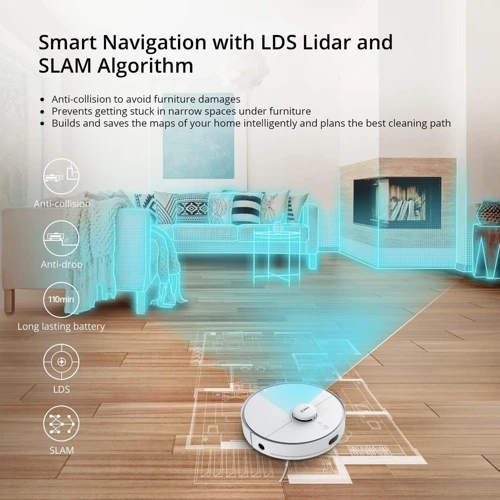
Smart vacuum cleaners are gaining popularity due to their ease of use and efficient cleaning performance. One of the significant technological advancements that make this possible is the simultaneous localization and mapping (SLAM) technology. This technology allows smart vacuum cleaners to navigate and map your home, ensuring that every inch is cleaned. In this section, we will explore some current applications of SLAM technology in smart vacuum cleaners that make them so efficient in their cleaning. Whether it’s using Lidar mapping or visual SLAM, these technologies have helped revolutionize how smart vacuum cleaners operate.
Lidar Mapping
Lidar Mapping
One of the most popular methods of SLAM technology used in smart vacuum cleaners is Lidar mapping. Lidar stands for Light Detection and Ranging, and it uses laser beams to detect obstacles and create a detailed map of the environment. Here are some of the key features of Lidar mapping:
- Highly accurate: Lidar technology can accurately measure distances within a fraction of an inch, which makes it ideal for creating accurate maps of indoor spaces.
- More reliable in low lighting conditions: Unlike visual mapping, Lidar mapping doesn’t rely on external lighting conditions to create a map, which means it can work in low-light conditions.
- Less susceptible to interference: Lidar technology is less susceptible to interference from other devices, so it provides a more reliable mapping solution.
- Expensive: However, the downside to Lidar is that it can be costly, which can increase the price of smart vacuum cleaners that use Lidar mapping technology.
Lidar mapping provides an accurate and reliable mapping solution for smart vacuum cleaners. It allows the vacuum cleaner to easily navigate and map the environment, which results in more efficient cleaning performance. However, the cost of Lidar technology is a significant factor to consider, and it may make smart vacuum cleaners with Lidar mapping more expensive than those that use other SLAM technologies.
VSLAM (Visual SLAM) Mapping
VSLAM, or Visual SLAM mapping, is a form of SLAM technology that uses visual data captured by cameras to navigate and map an environment. This method utilizes a combination of image processing and computer vision algorithms to create a map of the surroundings. It is particularly useful in situations where using lasers or other sensors might not be feasible or cost-effective.
How VSLAM Technology Works
During the VSLAM mapping process, a smart vacuum cleaner will capture images of the room from its camera sensors. The images are then fed into an algorithm that can extract features like edges, corners, and other distinctive points that can be used to identify and track the device’s position in the environment. By comparing these visual features to the camera’s previous images, the algorithm can calculate how the device has moved and create a map of the area it has covered.
The Benefits of VSLAM Mapping
One of the benefits of VSLAM mapping is that it provides an accurate representation of the environment in real-time. This means that the smart vacuum cleaner using VSLAM can take into account any objects or obstacles that may have been added or removed since the last cleaning session. Additionally, VSLAM mapping can also help smart vacuum cleaners to re-orient themselves if they are picked up or moved to a different location in the room.
The Limitations of VSLAM Mapping
While VSLAM mapping is an effective technology, it does have some limitations. One of the biggest limitations is that it relies heavily on the quality of the camera sensors. This means that poor lighting conditions or dirty lenses can negatively impact its effectiveness. Additionally, it may struggle in complex environments with lots of clutter or with repetitive patterns that make it difficult to identify unique visual features.
| Pros | Cons |
|---|---|
| Provides an accurate representation of the environment in real-time | Heavily relies on camera sensor quality |
| Can account for new obstacles or changes in the environment since the last cleaning | May struggle in complex environments with lots of clutter or repetitive patterns |
| Can re-orient itself if moved or picked up and moved to a different location in the room |
Conclusion
VSLAM mapping is a promising technology that has the potential to revolutionize the cleaning industry. While it does have some limitations, it provides an accurate and efficient way for smart vacuum cleaners to navigate and map an environment using visual data. As the technology continues to improve, it is likely that we will see more and more devices using VSLAM mapping to provide a better cleaning experience.
Hybrid SLAM Mapping
One of the latest advancements in SLAM technology used in smart vacuum cleaners is Hybrid SLAM Mapping. As the name suggests, it combines the best features of both Lidar and VSLAM mapping to create a more accurate and efficient mapping system.
What is Hybrid SLAM Mapping?
Hybrid SLAM Mapping uses a combination of both Lidar and VSLAM mapping techniques to obtain the most accurate map of the surroundings. While Lidar mapping is excellent for capturing 3D information about the environment, it struggles to process and interpret 2D features like walls and furniture. VSLAM, on the other hand, can detect 2D features more accurately, but it may not be able to accurately capture 3D information.
How Does Hybrid SLAM Mapping Work?
In Hybrid SLAM Mapping, the robot vacuum cleaner first uses Lidar sensors to collect 3D point cloud data of the surroundings. It then uses this data to estimate its position and orientation. Next, it uses a stereo camera or RGB-D (red, blue, green, depth) camera to capture 2D images of the environment. These images are then used to detect 2D features like walls, furniture, and other objects.
The robot vacuum cleaner combines the Lidar and camera images to generate a 3D map of the environment with accurate 2D feature information. The hybrid approach allows the robot vacuum cleaner to leverage the strengths of both technologies, resulting in a more accurate and comprehensive map of the environment.
The Benefits of Hybrid SLAM Mapping in Smart Vacuum Cleaners
Hybrid SLAM Mapping has a number of benefits when used in smart vacuum cleaners. Firstly, it improves the accuracy of the map generated by the robot, which helps the vacuum cleaner to navigate more efficiently and avoid collisions with obstacles. Additionally, it allows the vacuum cleaner to detect and avoid smaller objects like cords and toys that may not be detected by Lidar sensors alone.
The use of a camera in hybrid SLAM mapping also enables the vacuum cleaner to generate a more detailed map of the environment, making it easier to clean the entire area thoroughly.
Below is an html table summarizing the key points of Hybrid SLAM Mapping:
| Advantages | Limitations |
|---|---|
| Combines strengths of Lidar and VSLAM mapping | May have difficulty processing certain types of 2D features |
| Improves accuracy and efficiency of navigation | May still struggle to process highly cluttered environments |
| Enables the detection and avoidance of smaller objects | Higher cost compared to Lidar or VSLAM mapping alone |
| Generates a more detailed map of the surroundings | May require more powerful hardware and processing capabilities |
Hybrid SLAM Mapping represents a significant improvement over traditional Lidar or VSLAM mapping in terms of accuracy, efficiency, and detail. However, it may come at a higher cost and requires more powerful hardware and processing capabilities. Nonetheless, the benefits of using Hybrid SLAM Mapping in smart vacuum cleaners cannot be denied.
Challenges and Limitations of SLAM Technology
Despite its numerous benefits, SLAM technology is not without challenges and limitations. These limitations can affect the accuracy and efficiency of smart vacuum cleaners, and it is important to be aware of them when considering a purchase. In this section, we will explore some of the challenges and limitations of SLAM technology and their impact on smart vacuum cleaners.
Costs and Complexity
SLAM technology is undoubtedly a powerful tool for improving the efficiency and accuracy of smart vacuum cleaners. However, it is important to consider the costs and complexity associated with this technology.
Costs: The implementation of SLAM requires a significant financial investment, particularly for advanced systems that utilize multiple sensors and complex algorithms. This can make smart vacuum cleaners that incorporate SLAM technology more expensive than those that do not. Additionally, ongoing maintenance and upgrades may also add to the cost of these systems over time.
Complexity: The implementation of SLAM technology also requires a high degree of technical expertise. Developers and engineers must work together to design and implement complex algorithms that can effectively manage and analyze data from multiple sensors. This can be a time-consuming process and may require ongoing development and refinement.
The implementation of SLAM technology can add complexity to the user experience. Additional settings or software updates may be required to optimize performance, and some users may find this challenging or confusing.
While the costs and complexity of SLAM technology should not be ignored, it is important to weigh these factors against the benefits that this technology can provide. For smart vacuum cleaners specifically, the benefits of efficient navigation, accurate mapping, and improved cleaning performance make the investment in SLAM technology a worthwhile consideration for users who are looking for a high-quality cleaning experience.
Accuracy Issues in Dynamic Environments
One of the main challenges that SLAM technology faces is maintaining accuracy in dynamic environments. This means environments that are constantly changing, such as homes with children or pets. These changes can be in the form of moving furniture, toys, or simply people walking around.
SLAM algorithms rely on the assumption that the environment remains relatively static. When there are sudden changes in the environment, such as a new obstacle appearing, the robot may become disoriented, leading to errors in mapping and navigation.
To better understand these accuracy issues in dynamic environments, let’s take a look at the following table:
| Problem | Cause | Impact on SLAM |
|---|---|---|
| Obstacle movement | People, pets, or objects moving around the environment | Causes errors in mapping and navigation |
| Dynamic lighting | Changes in ambient lighting caused by doors opening, curtains moving, or clouds passing by a window | Causes errors in sensor data, leading to inaccurate mapping and navigation |
| Temporary obstacles | Objects that are temporarily placed in the environment, such as a chair being pulled out for sitting or cleaning | Causes confusion in the robot’s perception of the environment, leading to errors in mapping and navigation |
As we can see from the table, dynamic environments can cause a range of problems for SLAM technology, from errors in mapping to confusion in navigation. While these issues can be minimized through careful hardware and software design, they are still a limitation of current SLAM technology.
As technology continues to evolve, we can expect to see improvements in SLAM algorithms that better handle dynamic environments. For now, however, users of smart vacuum cleaners should be aware of these limitations and take steps to minimize changes in their environment to improve accuracy.
Hardware and Software Compatibility
One major challenge facing SLAM technology is ensuring that the required hardware and software are compatible with each other. This is especially important when it comes to smart vacuum cleaners, which require a delicate balance of both hardware and software to function properly.
Hardware Compatibility
When it comes to hardware compatibility, there are a few key factors that must be considered. The first is the type of sensor being used. Some sensors are better suited for certain environments than others, and choosing the wrong one can lead to inaccurate mapping and navigation. Additionally, the processor and memory capacity of the vacuum cleaner’s onboard computer must be sufficient to handle the SLAM algorithm.
Software Compatibility
On the software side, compatibility issues can arise if the SLAM algorithm is not optimized for the specific hardware being used. Additionally, there may be incompatibilities between the SLAM software and the vacuum cleaner’s firmware or operating system.
To ensure that hardware and software are compatible, manufacturers of smart vacuum cleaners must carefully test their products and ensure that all components work seamlessly together. It is also important for consumers to choose a vacuum cleaner that has been tested and proven to have reliable hardware and software compatibility.
The table below summarizes the hardware and software compatibility considerations discussed above:
| Hardware Compatibility | Software Compatibility |
| – Sensor type | – SLAM algorithm optimization |
| – Processor and memory capacity | – Firmware and operating system compatibility |
Ensuring hardware and software compatibility is crucial for the successful implementation of SLAM technology in smart vacuum cleaners. By carefully choosing and testing both hardware and software components, manufacturers can create products that offer efficient navigation, accurate mapping, and improved cleaning performance.
Conclusion
In conclusion, SLAM technology has revolutionized the way smart vacuum cleaners navigate and map our homes. The technology combines data from various sensors to create a map of the environment and optimize cleaning performance. With efficient navigation, accurate mapping, and improved cleaning performance, SLAM technology has become a must-have for any modern smart vacuum cleaner.
However, there are still challenges and limitations that need to be addressed. While cost and complexity remain an issue, accuracy issues in dynamic environments and hardware and software compatibility are also important factors that need to be considered.
Despite these challenges, current SLAM technology applications such as Lidar mapping, VSLAM (Visual SLAM) mapping, and hybrid SLAM mapping have made significant strides in improving the performance of smart vacuum cleaners.
As the technology continues to evolve, we can expect to see even more precise and efficient navigation, as well as more accurate mapping and cleaning performance. With the ability to navigate and map our homes with ease and precision, we can look forward to a future where smart vacuum cleaners will become an even more essential part of our daily lives.
In summary, while there are still challenges and limitations to be addressed, SLAM technology has significantly improved the performance and capabilities of smart vacuum cleaners, leading to a more efficient and effective cleaning experience for users.
Frequently Asked Questions
What is the difference between SLAM and traditional mapping?
Traditional mapping relies on pre-existing maps or blueprints, whereas SLAM technology creates a map in real-time using sensor data.
Can SLAM technology be used for other applications besides smart vacuum cleaners?
Yes, SLAM technology has a wide range of applications, including robotics, autonomous vehicles, and augmented reality.
How accurate is SLAM technology?
The accuracy of SLAM technology depends on several factors, including the quality of sensors and the lighting conditions in the environment. Generally, SLAM technology is very accurate.
Do all smart vacuum cleaners use SLAM technology?
No, some smart vacuum cleaners use simpler technologies, such as random navigation, to move around the environment.
What kinds of obstacles can affect SLAM technology?
Any obstacle that interferes with the sensors used by SLAM technology can affect its performance. This includes walls, furniture, and other objects within the environment.
Will SLAM technology work in a dark room?
Most SLAM technology requires some level of lighting to function properly. In a completely dark room, SLAM may not work effectively.
Can SLAM technology be used in outdoor environments?
Yes, SLAM technology can be used in outdoor environments, although it may be more challenging due to weather conditions and other factors.
Is SLAM technology difficult to set up?
Setting up SLAM technology can be challenging, as it requires a good understanding of robotics hardware and software. However, there are many resources available online to help with setup.
How can SLAM technology improve cleaning performance?
SLAM technology allows smart vacuum cleaners to map the environment and navigate efficiently, resulting in better coverage and more thorough cleaning.
Will SLAM technology make smart vacuum cleaners completely autonomous?
While SLAM technology is an important step towards autonomy, there are still limitations and challenges to overcome before smart vacuum cleaners can operate completely autonomously.
